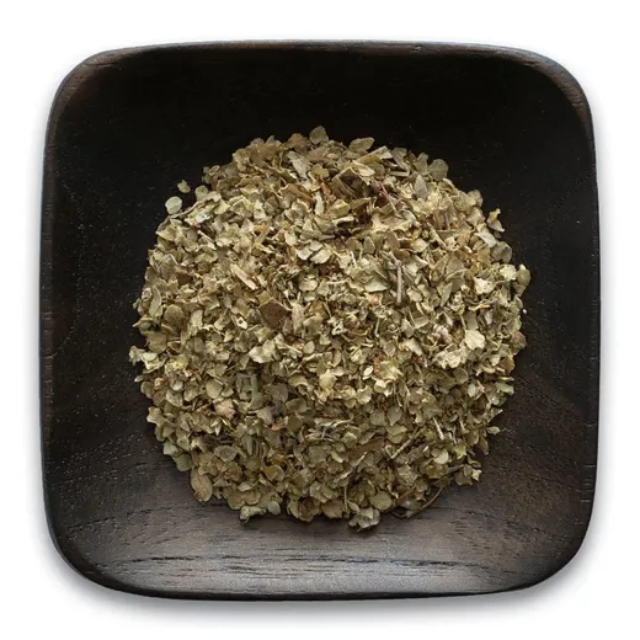Marjoram
Marjoram
Couldn't load pickup availability
Marjoram brings a mild, sweet, and slightly bitter flavor to your dishes. Ideal for soups, stews, and roasts, marjoram is perfect when you want a gentle, herbaceous note without overpowering the other ingredients. A cousin to oregano, it is rich in antioxidants and is known for its soothing effects on the digestive system.
Packaging: 4 oz Shaker Mason Jar
History: Marjoram is a member of the mint family, native to the Mediterranean region. It was prized by ancient Greeks and Romans for its aromatic properties and often used to flavor meats, soups, and stews.
Tasting Notes:
Marjoram has a delicate, sweet flavor with subtle earthy and floral notes. Its taste is mild, with a hint of citrus and pine, making it a perfect addition to a wide variety of savory dishes. It is often described as a milder, sweeter version of oregano, offering a more gentle, fragrant flavor profile.
Aroma:
The aroma of marjoram is fresh, sweet, and slightly minty, with a light, floral scent that adds a bright note to any dish. When crushed, it releases a fragrant, aromatic bouquet that is warm and herbaceous, with a hint of sweetness that is both inviting and refreshing.
Characteristics:
Marjoram is a member of the mint family (Lamiaceae) and is closely related to oregano. The leaves of the marjoram plant are small, oval, and green, with a soft, velvety texture. When dried, marjoram maintains its sweet and floral flavor, making it an excellent herb for seasoning various dishes, especially when a milder flavor is preferred over the stronger, more robust taste of oregano.
Perfect Pairings:
Marjoram pairs well with thyme, rosemary, oregano, basil, and garlic. It complements meats like chicken, lamb, and pork, and works beautifully in Mediterranean and European cuisine. Marjoram also enhances the flavor of vegetables, particularly in soups, stews, and roasted dishes, as well as in tomato-based sauces, salad dressings, and marinades.
Substitutions:
If you don’t have marjoram, you can substitute with oregano for a more robust flavor, though it will be more pungent. Other mild herbs like thyme, basil, or savory can be used in place of marjoram, though the flavor may differ slightly. For a floral touch, dried lavender can also serve as an alternative, although its flavor is more distinct.
Ideal Uses:
Marjoram is ideal for seasoning soups, stews, and sauces, particularly in Mediterranean, Middle Eastern, and European recipes. It pairs well with roasted or grilled meats, vegetables, and potatoes, and is often added to marinades and salad dressings. Marjoram also works wonderfully in spice blends, as well as in tomato sauces, pizzas, and pasta dishes.
Processing Method:
Marjoram is typically used dried, though fresh marjoram can be used in cooking when available. The leaves are harvested and dried to preserve their aromatic oils and flavor. Once dried, marjoram can be crushed or crumbled into smaller pieces to release its full flavor and fragrance.
Botanical Name:
Origanum majorana – Marjoram is derived from the Origanum majorana plant, a perennial herb in the mint family. It is native to Europe, particularly the Mediterranean region, and has been used in cooking for centuries to add a gentle, sweet flavor to a variety of savory dishes.





